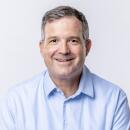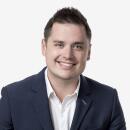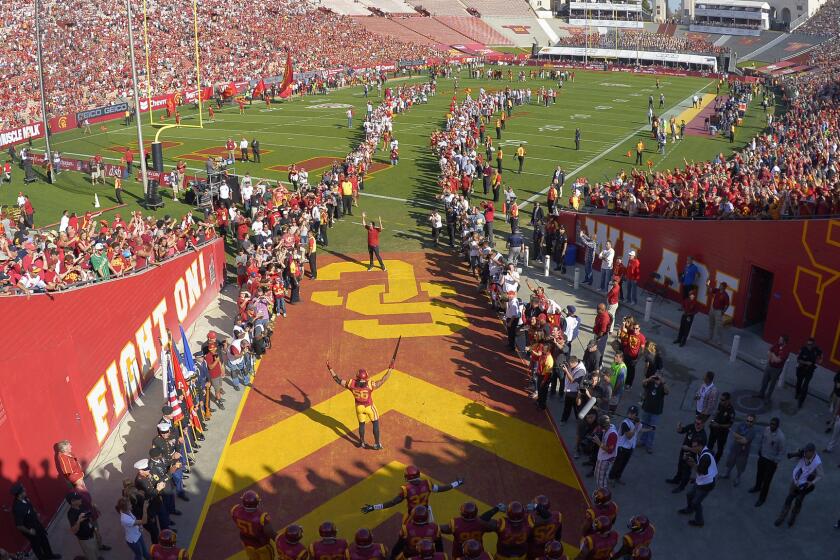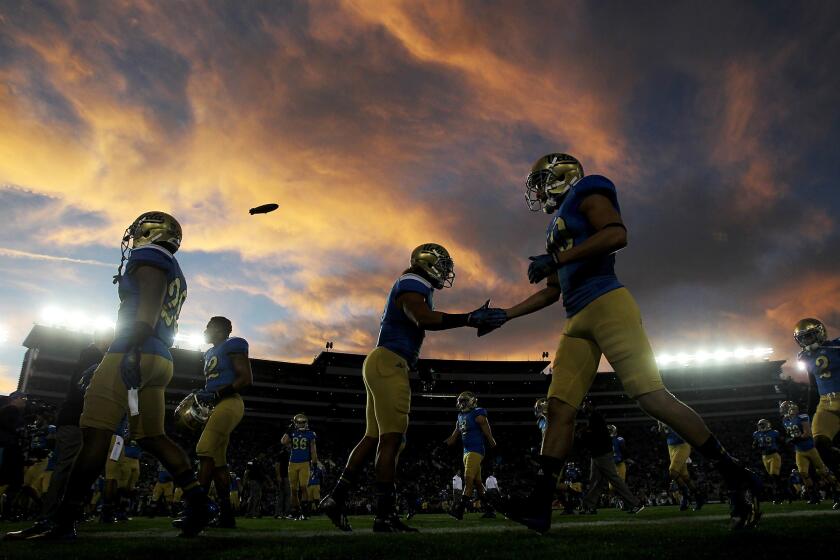Bubbles? May Madness? A delayed college basketball season could require both
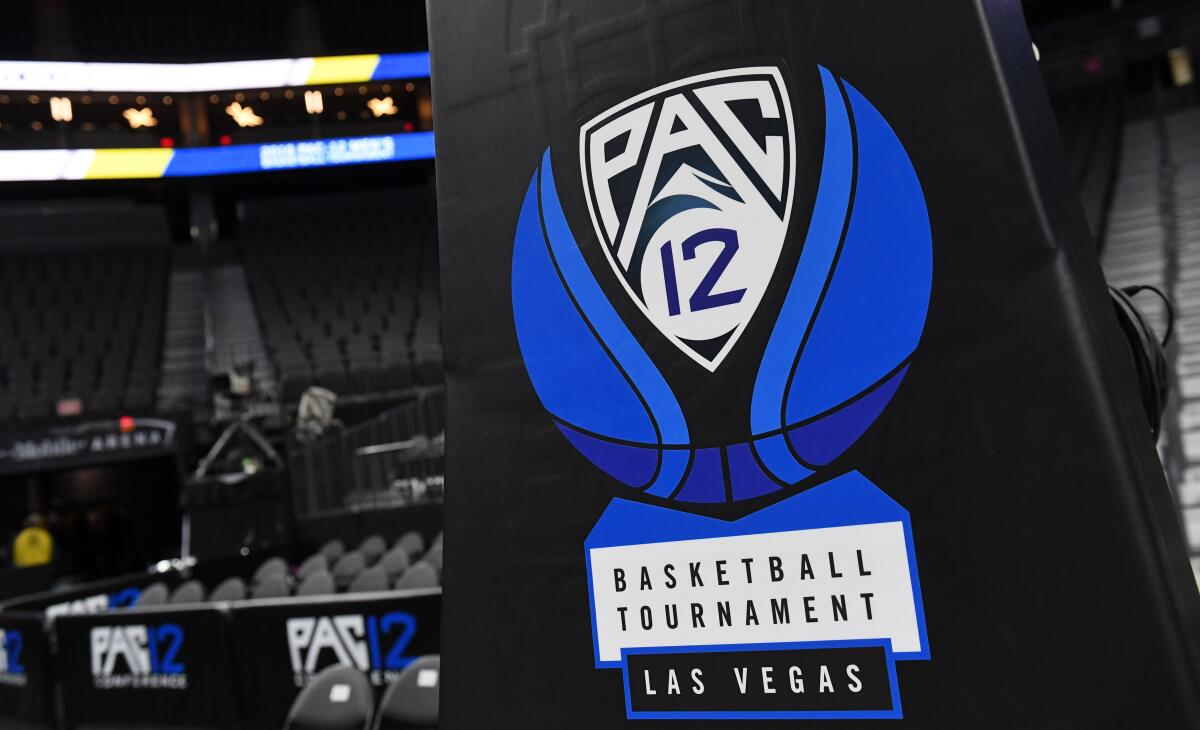
- Share via
In a new brand of college basketball madness, teams could move from on the bubble to in one.
One day after learning that his season would be pushed back at least two months because of the relentless novel coronavirus pandemic, UCLA coach Mick Cronin suggested that the limited use of a bubble environment similar to the one that has protected NBA players could help Pac-12 Conference teams safely compete.
Cronin proposed the possibility of using a bubble in Las Vegas for challenge games between conferences, the Pac-12 tournament or the NCAA tournament, noting that it was feasible because players were completing virtually all of their schoolwork online and wouldn’t have to be yanked out of classes.
“I just know we have to think progressively and come up with the best way to do everything,” Cronin said Wednesday afternoon. “Hey, hopefully we’re all playing home and home with fans in January and there’s a vaccine and daily testing and life’s great.”
Pac-12 Commissioner Larry Scott seemed philosophically opposed to a bubble when asked about the possibility Tuesday, and Cronin acknowledged the financial challenges that would prohibit encasing students in a protective environment for an extended period.
USC athletic director Mike Bohn said the Pac-12’s cancellation of fall sports was the result of too much uncertainty moving forward during the coronavirus pandemic.
“We don’t have $100 million to spend on a bubble,” Cronin said with a laugh. “We could have short-term weekend bubbles to play games, but I don’t see the NBA bubble for four months happening. I mean, could you imagine how much that would cost?”
A bubble has worked almost flawlessly for the NBA, which announced Wednesday that none of its 342 players tested for the virus since Aug. 5 have returned positive results.
USC coach Andy Enfield said a bubble could help restore at least some of the nonconference games that were essentially scrubbed from the schedule Tuesday when the Pac-12 said that no sports competitions could begin prior to Jan. 1. Holding games inside a bubble would allow conferences with different testing protocols to compete against one another after being put into isolation.
Pushing back the season leaves college teams with essentially two options: play a schedule involving some nonconference games and delay the start of the NCAA tournament or go to a conference-only model. Either way, Cronin said, he was optimistic there would be basketball.
“I’m 100% confident we will play,” Cronin said, “whether it’s March Madness or May Madness.”
Cronin said delaying the season made sense given the expectation that rapid virus testing could be readily available for college basketball teams as soon as November, enhancing the safety of players and coaches.
“To sacrifice a few games to be able to take our percentages of being able to slow the spread of this thing from 40% to 95%,” Cronin said, referring to estimated percentages of virus spread based on current testing models versus those involving rapid testing, “to me that’s a no-brainer if that is indeed the case.”
If all goes well, Cronin said he hoped to have players back on campus sometime in September and practicing by November ahead of a season that would start in January. Enfield said his players were in the process of returning to campus in preparation for the start of school on Monday.
The Trojans are expecting an influx of three graduate transfers, two other transfers and two freshmen who will need more than an introduction to fans; Enfield said the coaching staff hadn’t met five players in person.
UCLA coach Chip Kelly and players react to the Pac-12’s decision of canceling fall sports this season.
“We still haven’t met half of our team,” Enfield said. “It’ll be nice greeting from six or seven feet apart.”
Cronin has been lobbying to get approval for his players to return to campus because he thinks they can be better protected there than working out in crowded gyms and fitness centers.
“We’ve got guys playing all over the place and they’re just going to keep doing it,” Cronin said, “so why wouldn’t we have it in the safest environment possible with testing and protocols?”
Neither coach said he was startled by the postponement of the season given a steady increase in the virus’ foothold across the country and the fact that fall sports were also canceled through the end of the year.
“For me, 2+2=4,” Cronin said. “It didn’t surprise me and I just don’t see a way you’re going to play basketball and not volleyball. They’re both played in a gym, you’ve got about the same number of people on each team. So how do you justify playing one and not the other?”
More to Read
Go beyond the scoreboard
Get the latest on L.A.'s teams in the daily Sports Report newsletter.
You may occasionally receive promotional content from the Los Angeles Times.
